Zero waste, carbon negative buildings and throw in a flood contingency plan while you’re at it – sustainable construction has become a thriving industry within an industry. Its pioneers are shaping the future and their skills are much in demand. Building asked a selection of the industry’s leading lights to sacrifice a sliver of their carbon footprint to travel to Kew Gardens for a conference amid the balmy foliage of the Palm House. Lorraine Cushnie, Vikki Miller and Dan Stewart jotted down their pearls of wisdom
Rachel Wooliscroft
Group environmental manager, Wates
What she does As well as driving Wates’ sustainability targets, she helps its clients put together their environmental strategies
Ten years ago, a specialist department like Wooliscroft’s would not have existed. “You’d have been hard pushed to find an environmental head in any business, especially construction.” Now that she’s got there, she finds clients are very open to what she has to tell them. “There’s been a cultural shift. I think the industry has shown leadership in that respect.”
Internally, she is working on water resource programmes and is trying to get the industry to think about zero-waste policies. “The reaction has been positive,” she says. “People realise the opportunities in terms of efficiency and cost-cutting.”
But it’s not just green targets that concern Wooliscroft – she wants to use the industry’s resources and technology to help disadvantaged areas. “Financially, we’re extremely sustainable so we are in a prime position to effect social change.”
Technology tipped for success Heat pump technology that allows a building to be heated and cooled from sources in the ground, air or water. “It’s a cost-effective way to conserve electricity and the technology coming from Scandinavia is superb.”
Myth exploded That companies can do this on their own. Companies setting their own targets and failing to collaborate with others are doomed to failure, she says.
Terry Wyatt
Consultant at Hoare Lea and professor of building services engineering at the University of Nottingham
What he does Gives advice on green and technical issues
Fifteen years ago, Wyatt set up Hoare Lea’s R&D division, which soon became its environmental unit. “The main difference between now and then is that you can hold your head up high when you say you work in sustainability,” he jokes.
Wyatt says clients still need a lot of persuasion and most are in denial. “They know what the regulations are but they are hoping it doesn’t really apply to them.”
His strongest criticisms are reserved for contractors, however. “When they get hold of a job they write out all the green features. They are scared of technology and will give every reason not to do it.” Wyatt’s not too impressed with the powers-that-be, either. Public clients are all talk and no action when it comes to the green agenda, he says.
Technology tipped for success Solar wall heating, combined heat and power units, fuel cells and micro turbines
Myth exploded “That the Gherkin and buildings like it represent a blueprint for sustainable building; they don’t. That the government will have the guts to push through legislation in this area; it won’t. That it’s unaffordable to be sustainable; it is as necessary to a building as foundations.”
Peter Head
Head of planning, Arup
What he does Helps clients in the planning stages. He is also responsible for the construction of a Chinese eco-city, Dongtan
The demand for sustainability skills these days is overwhelming, according to Head. “It’s incredible,” he says. “The team is growing at quite a pace.” But he insists that the sustainability expert must not be pushed forward as someone who can solve all the problems. “The day of the guru is passing,” he says. “It’s about teams now.”
Head thinks the biggest challenge facing the industry is the refurbishment of buildings to make them more energy-efficient. “It’s about retrofitting and refashioning our cities,” he says. “In future, it is possible the industry will be focused on refurbishing these old buildings – not new-build like now.”
Technology tipped for success Bio-mimicry technology, for example, the anaerobic digestion of waste
Myth exploded That sustainability is about green issues. “I’ve never seen it as a green thing. Sustainability for me is about being responsible for the future.”
Barry Smith
Environmental manager, Simons Group
What he does Makes sure Simons Group’s projects are as green as they can be Smith had been in the industry for 20 years before he took on his first environment-friendly project: the Earth Centre in Doncaster in the late nineties. Soon after, he was asked to join Simons with the aim of developing an environmental division.
The Gherkin is not a blueprint for the future
But now he says, “I honestly don’t think the industry has changed. It’s just fudging things around the edges”. Smith wants the industry to have a “radical rethink”, including reducing the amount of bespoke designs. “Bespoke buildings like the Gherkin are not sustainable because that technology won’t be used again.” The answer, says Smith, is to use more standardisation.
Technology tipped for success Fuel cells. “I think buildings will have more autonomy for collecting their own energy and water.”
Myth exploded That people know what it means to be sustainable. “It’s more than just being carbon-neutral. We need to use less, re-use what we’ve got and waste nothing.
We have to completely rethink the way we live and work.”
Guy Battle
Founding partner, Battle McCarthy
What he does Designs low-energy buildings and tells clients how to green their businesses
Unlike some of the other gurus, Battle believes the UK is leading the world in sustainable construction. He says this is the result of strong leadership from the government and the Greater London Authority, such as obligatory on-site renewables for London projects. “They’ve set the ball rolling,” he says. “The people who have been in this business for a long time, like me, can now hit the ground running.”
But like other members of the group, he believes the next big challenge is to go beyond carbon-neutral buildings. “If we stay carbon-neutral, we’re standing still,” he says. “The new has to be significantly better than the old – that’s carbon-negative buildings.”
Technology tipped for success Battle declined to name a specific technology but suggested carbon pricing would kick-start a dramatic cut in emissions
Myth exploded “It doesn’t cost more to be sustainable. We very rarely go over budget. It’s about shifting the money around – taking it out of one area and re-allocating it.”
Rab Bennetts
Director, Bennetts Associates Architects
What he does “A mixed bag: building design, client contact and design criticism.”
Bennetts read EF Schumacher’s Small is Beautiful as a student and it stayed with him. “It struck me even then that we needed to design with minimum impact,” he says.
In his practice, working with eco-friendly rules and technology is not a burden, but an inspiration. “Using solar shading and timber instead of aluminium makes buildings more environmentally sensitive,” he says. Clients are generally receptive. “We make sure it works for them. If it matches what they want most clients say yes.”
According to Bennetts, what’s really standing in the way of a sustainable industry is the commercial property model. “The separation of landowner and tenant is a big problem. When the owner is not the user, you don’t get the same level of social responsibility.”
Technology tipped for success Better design methodology will make practice simpler. “We can’t just look to new products,” he says.
Myth exploded There are too many to count. “A phrase we often use is ‘greenwash’. It’s shorthand for bullshit.”
Isabel McAllister
Director of management consulting at Cyril Sweett
What she does Tells public sector clients how to push sustainability targets and works with private designers and architects on greener concepts
McAllister started her career at BRE under Nigel Howard, later chief technology officer of the American Green Building Council. Now she’s at Cyril Sweett she finds persuading people to invest in green technology is no longer such a challenge. “You’re not selling a concept any more. The information out there is more complex and challenging, so when you show them that, things tend to get built.”
Although zero-carbon policies are taking off in the industry, zero-waste policies are going to be harder to implement: “The next step is getting people, whether they work in building sites or offices, to recycle or re-use every piece of waste they produce,” she says. This will mean educating people from the ground up, but McAllister says individual responsibility is growing: “People take sustainability personally now. Even senior characters are practising what they preach.”
Technology tipped for success “The products that are coming out now haven’t been monitored in the long term. Until we have facts rather than predictions, we won’t be able to tell what’s worth investing in.”
‘Sustainability’ means using what natural resources remain to preserve our consumer lifestyles
Myth exploded “We’re not all bearded, sandal-wearing types,” she says. “There’s still a stereotype that all we do is wander around hugging trees.” What did she make of our leafy cover shoot, then? “I didn’t mind that. It was quite kitsch. It’s irony, isn’t it?”
Jon Broome
Architect and consultant, Jon Broome Architects and Sustainability Works
What he does Designs social housing schemes and advises other businesses
Broome began by designing low-energy buildings in the eighties before branching out into wider sustainability issues. He believes the industry has made progress but that the effort is often misplaced. “There are lots of fads. Putting a windmill on the roof is barmy but its visible. The whole microgeneration agenda is low down the priority list.”
Instead he would like to see more effort going into improving the existing building stock. “The industry’s not doing as much as it could be, it’s notoriously slow to change. There’s lots of new technology it could embrace.” He doesn’t let clients off the hook either. “There’s a culture of minimum compliance. People have to be pushed kicking and screaming into doing more.”
Technology tipped for success Vacuum insulated panels and vacuum glazing.
Myth exploded That microgeneration is a priority. “There’s so much else we could do.”
Lynne Sullivan
Director of sustainability, Broadway Malyan
What she does Leads the practice’s designers in minimising environmental impact
Sullivan has been an architect for 20 years, so she has witnessed first-hand the dramatic shift in environmental thinking. She says the biggest change is that clients are actively concerned about sustainability. “They understand it’s about all kinds of minutiae like energy performance, material specifications and construction quality.”
She bridles at the suggestion that it can be expensive: “You’re not talking about cost, you’re talking about value. It’s difficult to say sustainable design equals x pounds, because that’s not looking at the bigger picture.”
Taking the broad perspective means being realistic, she says. There’s no point in ignoring the harsh truths of climate change. “If you’re looking to future-proof a building and climate change scenarios going forward 50 years, you have to be ready to say, well, this site might well be flooded in 50 years.”
Technology tipped for success Vacuum glazing
Myth exploded The idea that you have one sustainability person on a project team. Working towards sustainability needs to be a team effort: “You have to implant it in everybody at the training stage.”
Nitesh Magdani
Associate, Aukett Fitzroy Robinson
What he does Heads the architecture practice’s new sustainability group
Magdani was always aware of green architecture but it was his work on the Adnams hemp distribution centre (10 November 2006, pages 46-50), that ignited his passion. He says working on Adnams was like “going back to uni” because all the technology was so new.
He thinks the industry is getting greener, but its approach is disjointed. “It’s not enough to have green materials and technology. It needs to source materials locally.” And zero carbon, he adds, will have to give way to carbon-negative development. To create a more “holistic” approach to construction, Magdani says the architect must be at the centre of the process, as they are the only ones who “can have a large impact on sustainability through design”.
Technology tipped for success “Existing products have to be made more effective.”
Myth exploded “Sustainability. We have invented this word to preserve the remaining natural resources of our consumer lifestyles.”
Ant Wilson
Director, Faber Maunsell
What he does Gives sustainability advice to clients to get projects through the maze of green planning regulations
Wilson did a degree in building services, took the environmental options and has been working on things sustainable ever since. These days, he’s involved with high-profile projects, including Frank Gehry’s mixed-use scheme in Brighton and the massive Land Securities development in Victoria.
Contractors are afraid of technology and will give every reason not to use it
He says clients recognise that green experts are crucial to securing planning permission for large schemes, which is why his department has increased 50% since last year.
One of the main challenges ahead, he says, is to make sure off-site modules can be recycled. “They have to be to be reusable or we’re just creating more problems.”
Technology tipped for success Hydrogen fuel cells, wave power and biotechnology
Myth exploded “There is a perception that sticking a windmill or PV on your house makes it really green. That’s greenwash.”
Andrew Kinsey
Head of sustainability, Bovis Lend Lease
What he does Makes Bovis Lend Lease’s construction process greener by reducing site waste and finding greener building materials. He turns up to the shoot with a piece of hoarding made from printer cartridges
Kinsey may work for a construction giant but he says the biggest task is to get small and medium-sized enterprises on board. “They don’t have a clue on sustainability.”
Kinsey is adamant that the subject has lost its fluffiness and is now taken seriously. At Bovis, he has to report directly to UK chief executive Murray Coleman.
He says ideas such as using standardised design module units on PFI projects could help reduce waste: if modules were over-ordered on one project, they could simply be transferred to another. He does acknowledge, however, that architects would probably object.
Technology tipped for success Phase change materials – substances that change form and absorb and release heat as they do so.
Myth exploded “Why does everyone think sustainability costs more? It might be true in capital terms but not for the long term.”
Andy Ford
Founder and director, Fulcrum Consulting
What he does Lectures and advises companies on sustainability planning
Ford has the kind of sustainability credentials companies dream of. He’s a member of the CIBSE council, a Cabe enabler for sustainability and low-energy design, and his company is a founder member of the UK Green Building Council. In the construction industry, he says, “people need to adapt their knowledge to come to terms with sustainability, from the bottom up”. And society at large should be more concerned about the future: “We’re all thinking about how to minimise climate change, but not about what to do when it happens. It will be a completely new world.”
Technology tipped for success “I’ve put my money on a lot of them,” he says.
“Large-scale heat storage is probably what we need to look at.”
Myth exploded The idea that we need to burn things to make heat. “There’s plenty of heat coming from the sky.”
Riccardo Rizzi
Environmental manager, Overbury
What he does Helps Overbury’s management and clients to think and work greener
Much to his dad’s amusement, Rizzi decided he was going to become an environmental consultant at the age of 15. He has spent the past nine years working in this field and watched the industry’s attitude change. “In the past it was regulatory-driven; you had to do it. Now companies are trying to differentiate themselves on the environment and this is leading to innovation.”
Clients are becoming more aware of their green credentials, he says. “They want to know what the implications are if they use green technologies. I tell them everything we can do to make a building sustainable, but it varies as to how much they adopt. Clients don’t like signing blank cheques but if you can quantify the sustainable elements you want to introduce, most companies will go with it.”
Technology tipped for success Combined heat and power units. “It one of the things Ken Livingstone is going to push and they will help people meet Part L.”
Myth exploded That it costs more to be green. “It’s not a cost issue; it’s a knowledge issue.”




















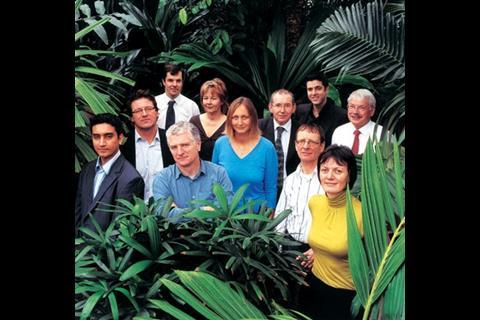
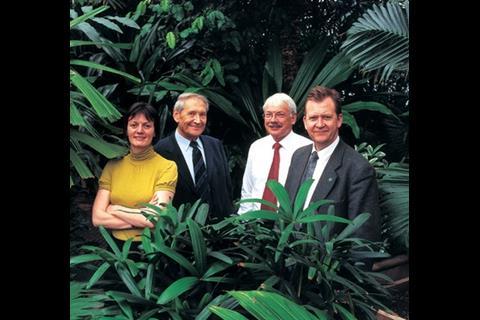
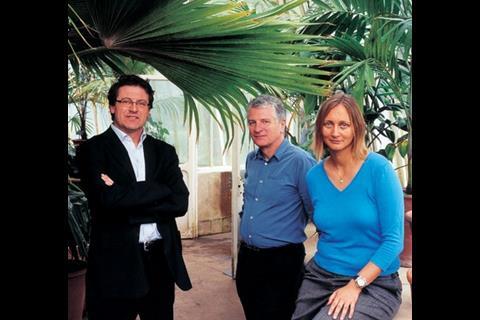
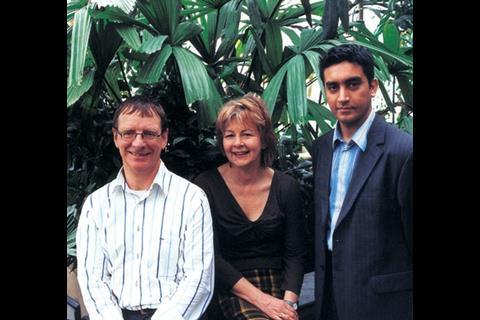
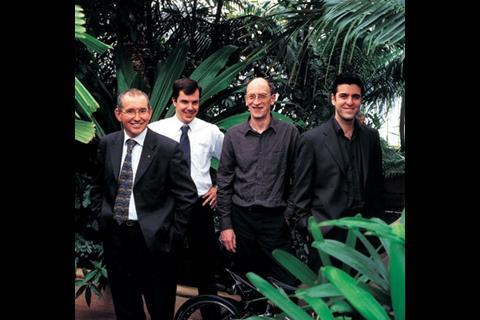

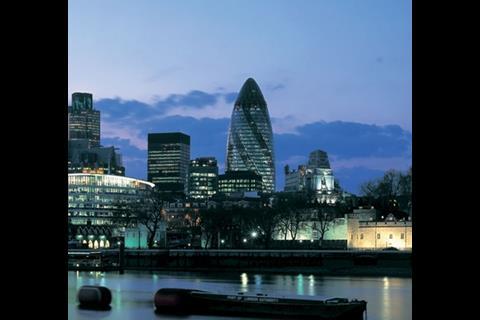









1 Readers' comment